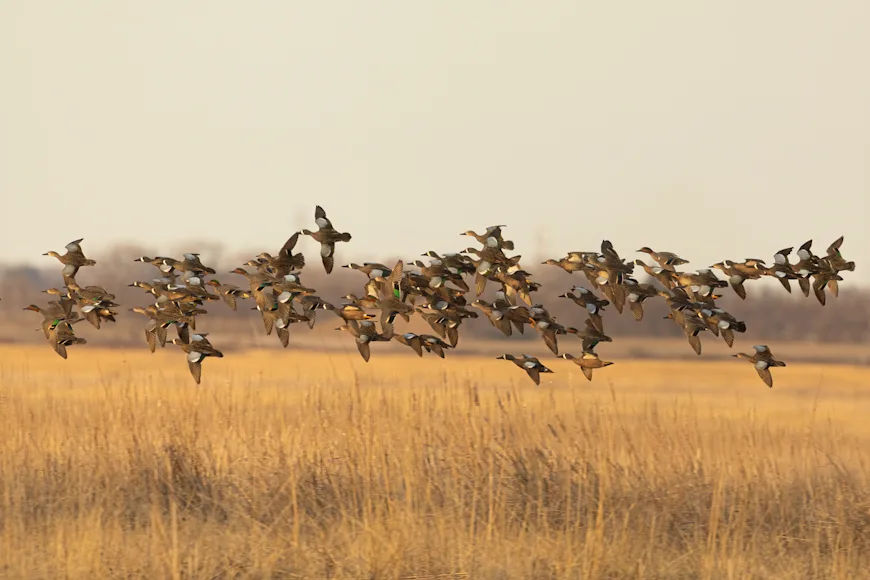To the serious duck hunter, September only means one thing: Teal. It doesn't matter if it's bluewings, greenwings, cinnamons, or all three. Early teal season is the duck hunter's first chance to dust off the decoys, polish the shotguns, and tune the calls. Chasing these small birds in the late summer heat is the official kickoff to the best time of year: Duck season.
Across most of the nation, excluding the Pacific Flyway and a few other states, duck hunters are offered an early teal season. Although brief, these shortened seasons give hunters the opportunity to chase early migrating teal. Since the Pacific Flyway already has a 107-day regular season—the maximum allowed by the U.S. Fish and Wildlife Service—there is no early teal season on the West Coast. The other three flyways have shorter regular duck seasons (60 days for the Atlantic and Mississippi flyways and 74 days for the Central flyway), making it possible to set aside some time in September to shoot teal.
There are three subspecies of teal commonly found in the U.S. For the most part, blue-winged and green-winged teal inhabit the Atlantic, Mississippi, and Central flyways. Green-wings, along with cinnamon teal, also call the Pacific Flyway home. All three species are small dabbling ducks weighing roughly a pound or slightly less, and all prefer shallow water in which to tip-up to feed on vegetation, bugs, and aquatic invertebrates.
When it comes to early teal season, bluewings are the name of the game. Although, it's not uncommon to also shoot greenwings and the occasional cinnamon teal if you're in the right area. Regardless of the species, we put together this complete teal hunting guide, along with a great recipe so you're ready to shoot teal from September to January.
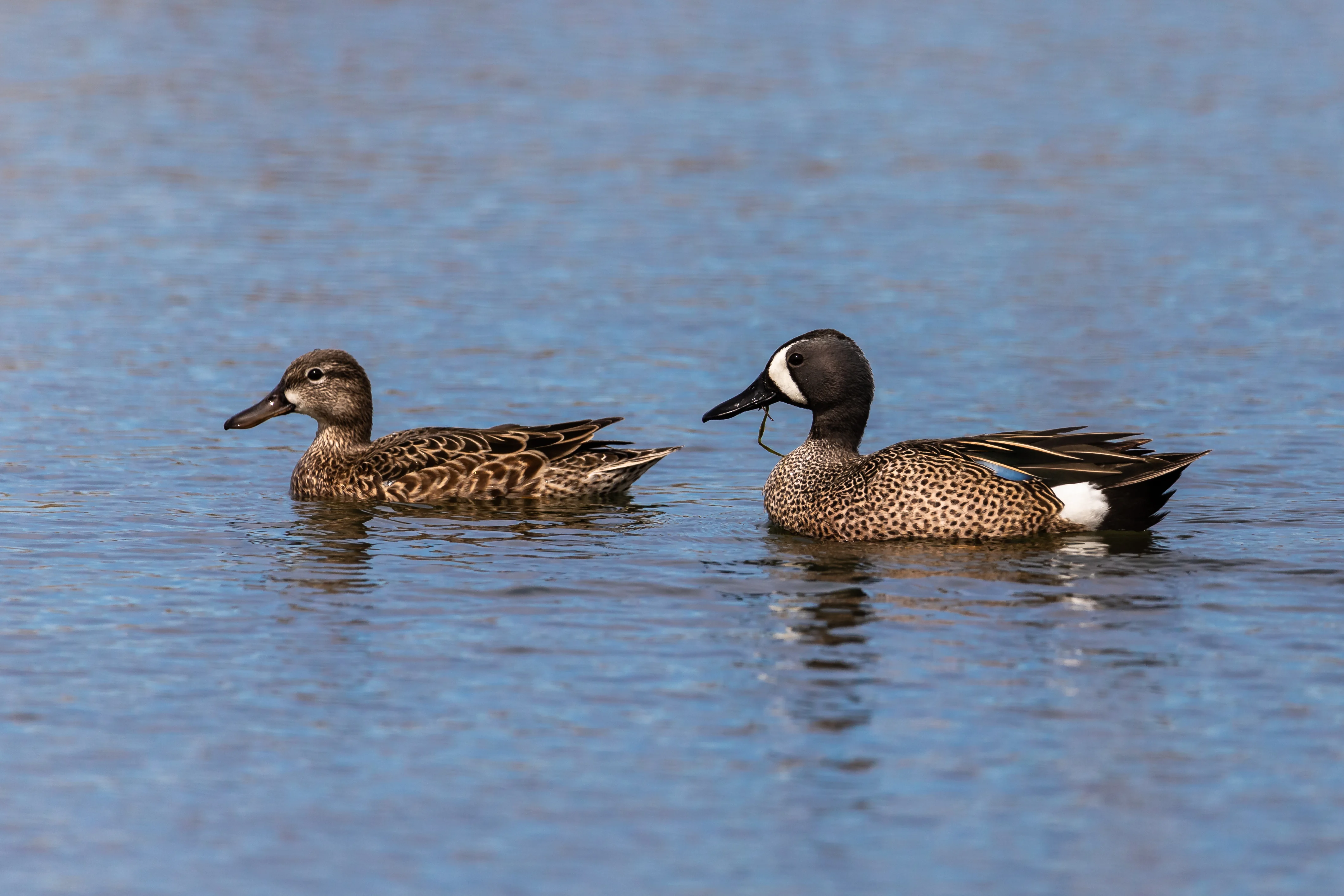
Blue-winged Teal
The largest of the three U.S. teal, a mature bluewing will weigh 18 to 24 ounces. In early fall, both drakes and hens will be a similarly mottled brown with a dark brown or black bill and yellowish legs/feet. Both will sport the namesake powder blue wing patch, a distinctive field identifier. The drake is also easy to spot with iridescent green secondary wing feathers. Come late winter and early spring, a drake's head and neck will turn a brilliant purplish-blue, and a white crescent moon appears just ahead of his eye.
Hunting Methods
Looking for a limit of September bluewings? Some of the best bets may be in the Mississippi Flyway in such states as Ohio, Illinois, Iowa, and Missouri. Teal hunting is often not as gear-intensive as other forms of waterfowling. It isn't as cold either. Hunters only need to spend time scouting, as cold-sensitive bluewings are a here today-gone tomorrow type of bird.
Decoys, whether teal or larger mallards for better visibility, arranged randomly can be helpful. So can a high RPM spinning wing decoy (where permissible) for added attraction. Some hunters will ‘pinch down’ a traditional mallard call, blowing quick bursts of air over the reeds to mimic the bluewing rapid cadence. Others will use a teal-specific call, like the ones offered by Rod Haydel or Phil Robertson. For shotshells, I prefer light loads (1- to 1-1/8 ounce) of small, non-toxic shot, (steel #7s), along with a ThermaCELL unit or gallon of bug repellent and plenty of hydration.
Green-winged Teal
The green-winged teal holds the distinction of being the smallest North American dabbling duck. Often weighing less than a pound, the hen greenwing is overall a drab, unassuming, mottled brown. The drake, on the other hand, is eye-catching in full plumage, with a rusty-red head, brilliant green eye ‘swoosh,’ salt ‘n pepper chest, and mixed buff and black rump feathers. In flight, both the drake and hen display shiny green secondary feathers.
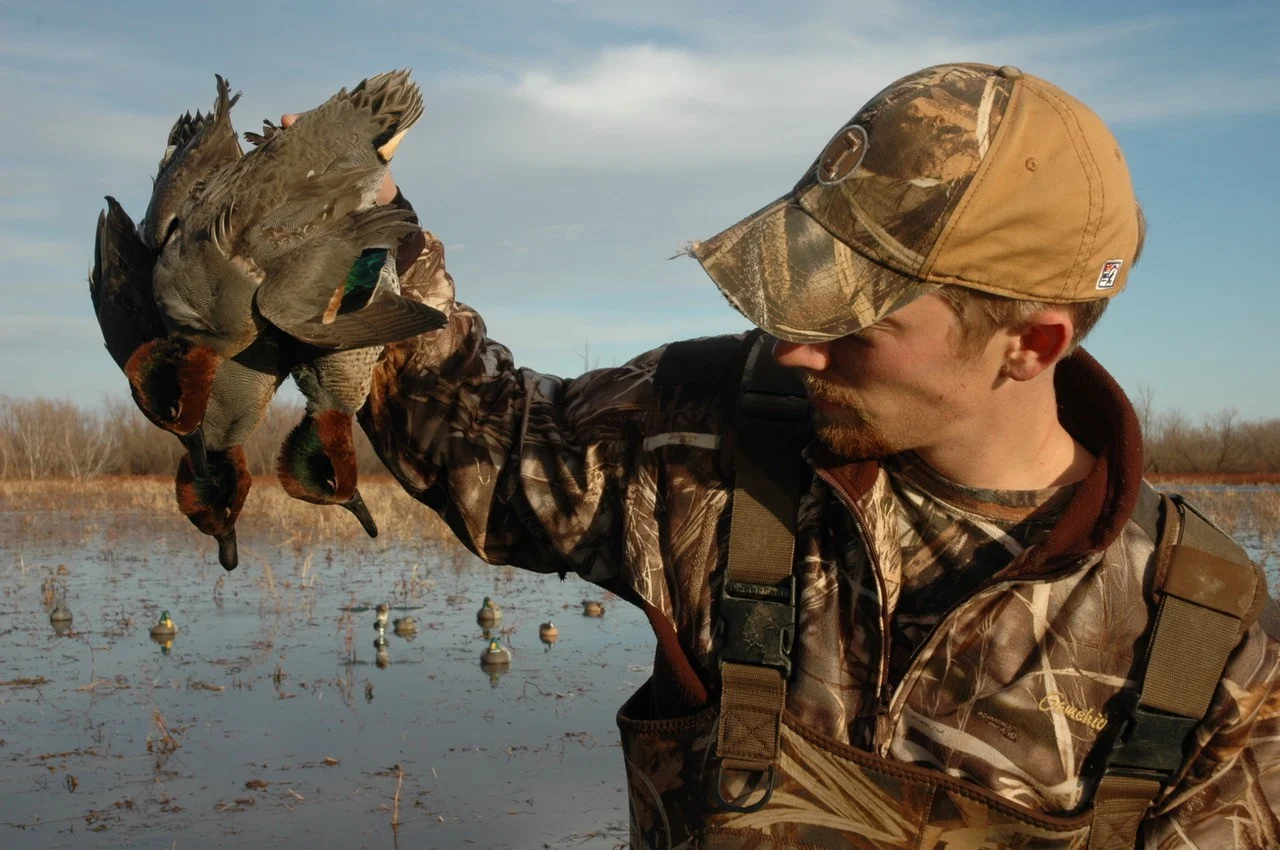
Hunting Methods
To me, there really are only two exceptions between targeting greenwings and bluewings. The first is calling. While I’ll continue to pinch down a mallard call to a higher pitch and a faster quack…quack…quack machine-gun cadence when hunting greenwings, I’ll also throw in short breathy PEEPS blown through a whistle like Buck Gardner’s 6-in-1. Green-wings do a lot of peeping, especially on the water, so it’s a natural, far-reaching sound they’re used to hearing.
The second difference is decoy setups. There are, without question, a ton of teal decoys available. However, teal decoys, like teal, are small and have a tendency to become invisible in anything other than open water. For that reason, I’m partial to the bigger mallard or gadwall decoys for green-wing hunting. On-the-water motion is also extremely important. Electronic bubblers, ripplers, splashers, and thrashers are fine, but nothing produces waves like an old-fashioned jerk cord. And greenwings love all that movement.
Cinnamon Teal
It’s easy to mistake a cinnamon teal in eclipse with a blue-wing, as both dull brown species share the unmistakable soft blue upper wing patch. Come winter, the drake cinnamon takes on an easily identifiable deep reddish hue on the head, neck, chest, and sides. These birds also feature a jet black bill (an easy way to tell the difference between a hen blue-wing and hen cinnamon), tail, and primaries, as well as bright yellow legs/feet.
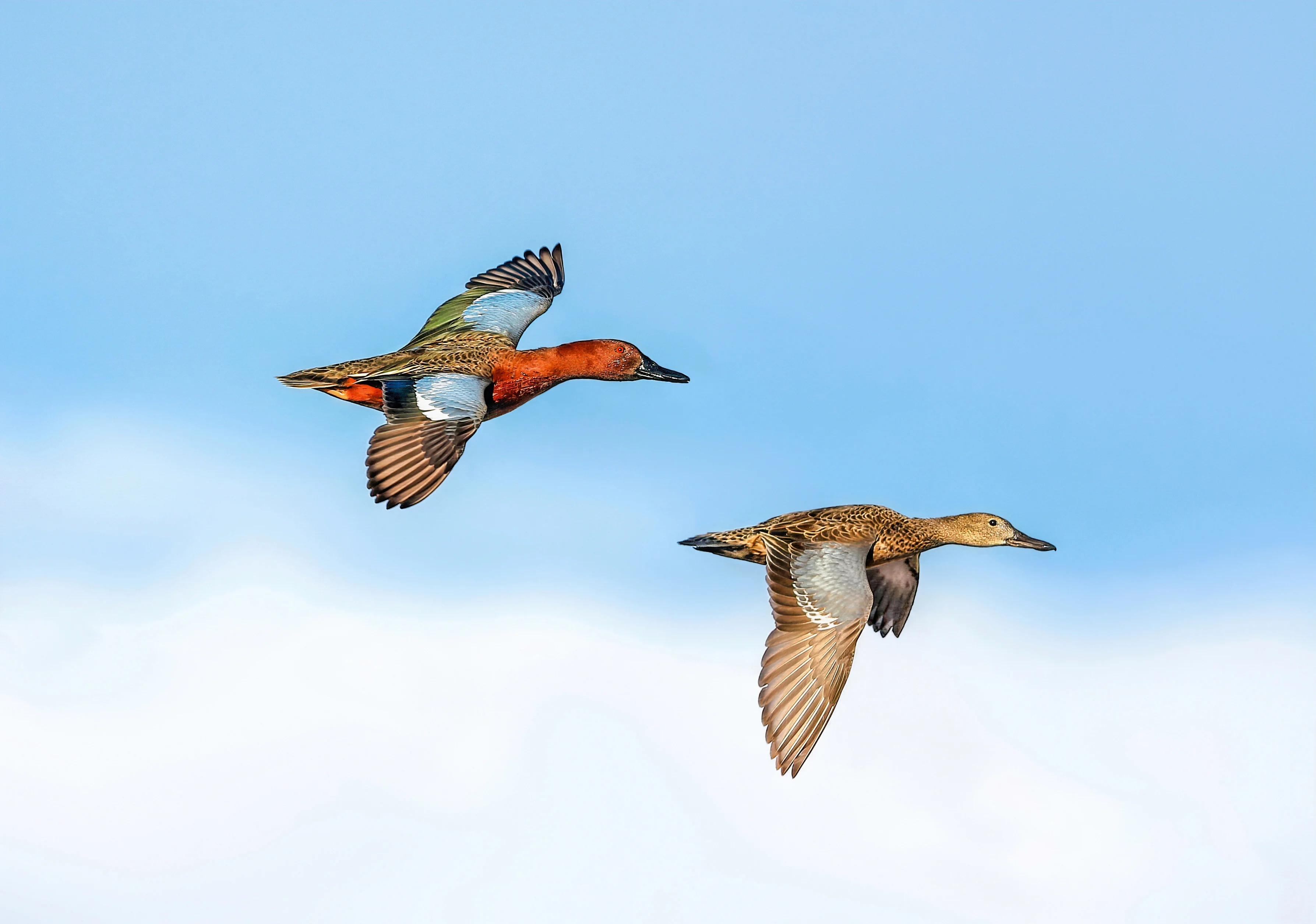
Hunting Methods
In search of your first cinnamon teal? Utah’s Great Salt Lake might very well be one of the hottest tickets available. However, Nevada and California also offer excellent opportunities to kill these colorful birds.
“Cinnamons are definitely a breed of their own,” says Nevada hunter Travis Lyle, a public relations staffer with Banded Holdings. “They tend to stick with their own, and if you’re not on the X, you may not get a single one. You have to be right where they want to be. We run cinnamon decoys, and even that doesn’t work at times.”
“We shoot cinnamons often,” he continued, “because when we find them, we target them. If we run a big teal spread, we’ll run (maybe) a dozen cinnamons mixed in with them. But still, we’ve learned that often, the cinnamons want to be ‘right over there,’ and if you move right over there, you stand a better chance of getting them. You can force greenwings into you. Cinnamons will just go right by.”
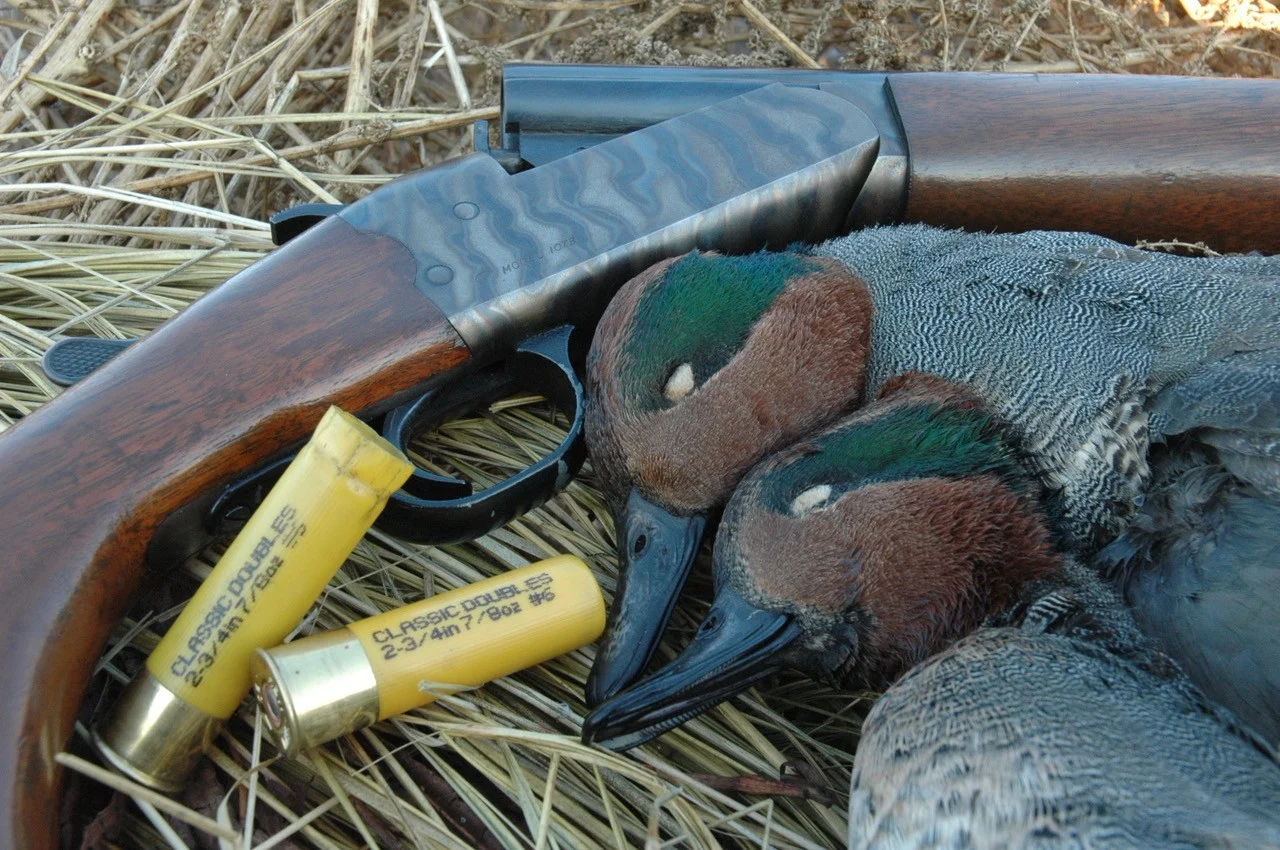
The Ultimate Teal Recipe
I discovered this incredible teal recipe by accident as I was gearing up for a big catfish fry. I’d just gotten back from north-central Missouri with a cooler full of fat bluewings, all of which I plucked whole. While waiting for my peanut oil to hit 360 degrees, I had an epiphany, which included:
Four whole-dressed teal
Couple of big diced sweet onions
Whole cranberries
Diced apples and peel-on oranges
Fat bacon
Toothpicks
I pluck my teal and then split them up the back with heavy tin snips to remove the innards. It’s quick, easy, and allows me to get everything out and keep the bird’s breast/front looking nice should I decide presentation matters. Once the birds are prepared, fill each teal with diced sweet onions, a few cranberries, and a small handful of mixed apples/oranges. Wrap in fat bacon and secure with a toothpick. Once your peanut oil hits 360 degrees, slowly lower the dried birds—remember oil and water don’t mix well—into the kettle one at a time.
Give each teal six minutes or so while gently turning with a long-handled slotted spoon. Remove and rack drain. If your guests are like mine, all of whom initially turned up their collective noses at the thought of eating ducks, the birds will be gone as soon as they hit the open air. Guaranteed!

